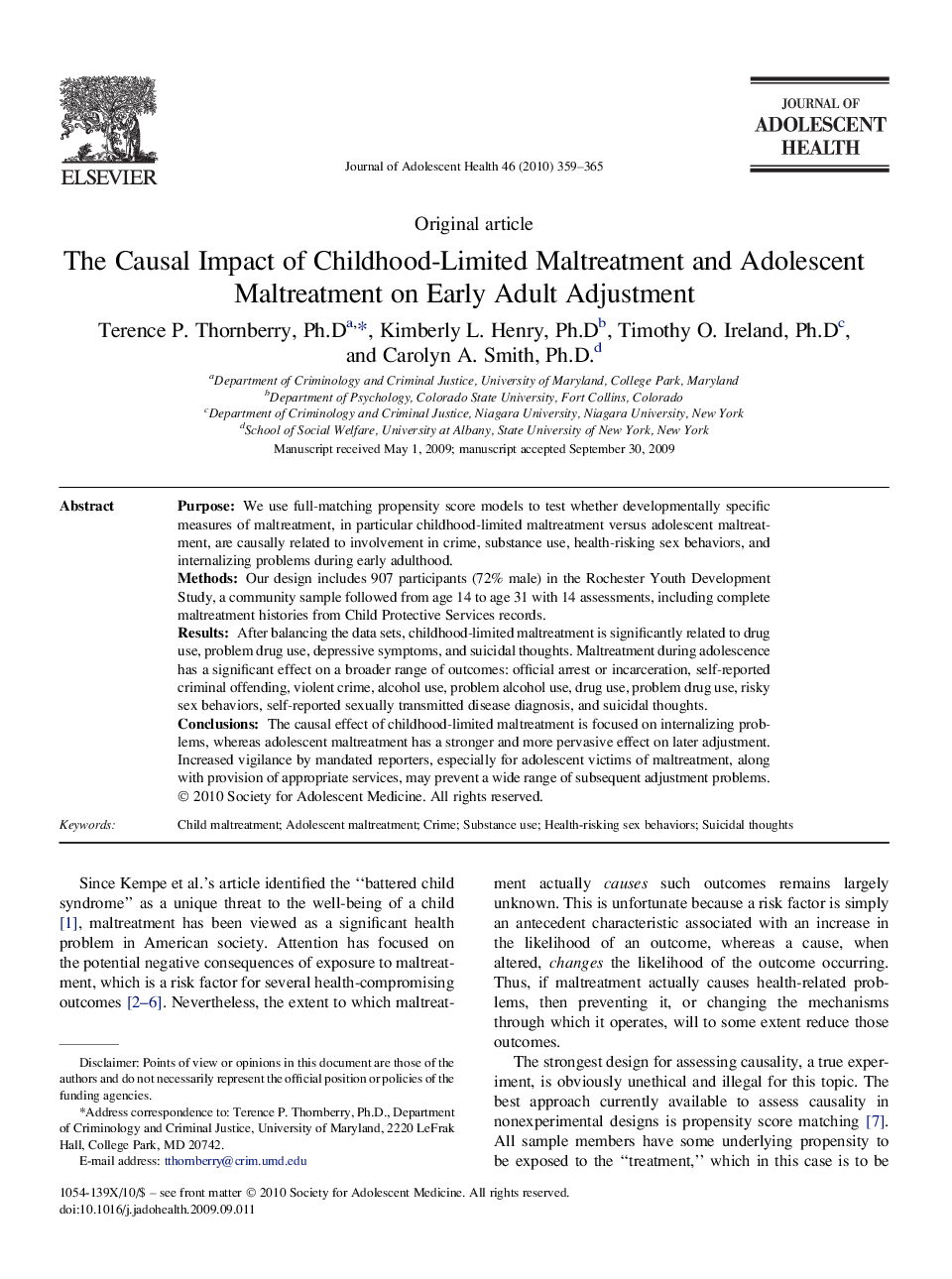| Article ID | Journal | Published Year | Pages | File Type |
|---|---|---|---|---|
| 1079909 | Journal of Adolescent Health | 2010 | 7 Pages |
PurposeWe use full-matching propensity score models to test whether developmentally specific measures of maltreatment, in particular childhood-limited maltreatment versus adolescent maltreatment, are causally related to involvement in crime, substance use, health-risking sex behaviors, and internalizing problems during early adulthood.MethodsOur design includes 907 participants (72% male) in the Rochester Youth Development Study, a community sample followed from age 14 to age 31 with 14 assessments, including complete maltreatment histories from Child Protective Services records.ResultsAfter balancing the data sets, childhood-limited maltreatment is significantly related to drug use, problem drug use, depressive symptoms, and suicidal thoughts. Maltreatment during adolescence has a significant effect on a broader range of outcomes: official arrest or incarceration, self-reported criminal offending, violent crime, alcohol use, problem alcohol use, drug use, problem drug use, risky sex behaviors, self-reported sexually transmitted disease diagnosis, and suicidal thoughts.ConclusionsThe causal effect of childhood-limited maltreatment is focused on internalizing problems, whereas adolescent maltreatment has a stronger and more pervasive effect on later adjustment. Increased vigilance by mandated reporters, especially for adolescent victims of maltreatment, along with provision of appropriate services, may prevent a wide range of subsequent adjustment problems.
